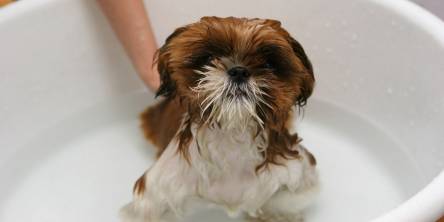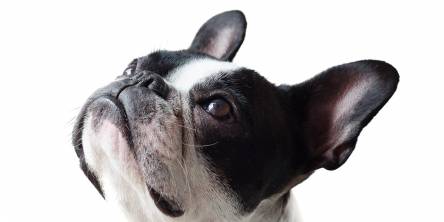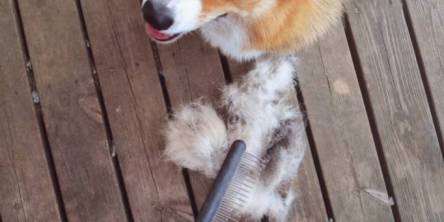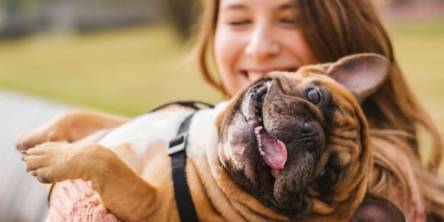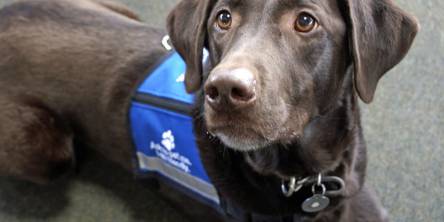How to Treat Your Dog’s Allergic Symptoms
Just like humans, our beloved pets can also suffer from allergic reactions. Allergens can exist in the air, environment, parasites, and food, among other sources. There are multiple factors that cause a dog to develop allergies, but genetic disposition is the most significant contributor. Many animals may also be allergic to more than one thing.
It is highly recommended that you first have your dog tested for allergies by a vet. Skin and blood tests can identify a dog’s sensitivity to certain environmental allergens and parasites. However, diagnosing a food allergy is a much more challenging process of elimination that requires trial and error on your part.
If a puppy is genetically predisposed, there is not much you can do in terms of preventing allergies. There is also a chance that older dogs can develop seemingly new allergies later in life. Some experts avoid giving antibiotics to puppies as much as possible, and recommend fortifying their gut balance with probiotics while they’re young. There are also cases in which dog allergies naturally resolve themselves over time.
The most effective way to treat your dog’s allergic symptoms is to make sure the allergens are avoided. Avoidance is the only way to address a dog’s food allergy. If your dog is allergic to something in its diet, you must take the time to figure out the cause. Rather than buying packaged dog foods, you can choose to prepare healthy meals for your pup so you know exactly what goes into them. However, if that is difficult, consider checking out the blog on Petsho. It provides useful recommendations on dog food and other dog supplies, as well as tips on their training and care. For giving food, use a stainless steel or glass food bowl instead of a plastic one.
One of the most common types of pet allergies is called atopy, also known as atopic dermatitis or allergic inhalant dermatitis. This occurs when a dog has a poor reaction to an allergen through breathing or contact with the skin. Many allergens can trigger atopy such as pollen, dander, insects, plants, fungi, and dust.
Eliminate the probable causes (like dust mites and dirt) from your home by vacuuming regularly. Wash the dog bed in very hot water or cover it in a slip if it is fuzzy or stuffed. Consider removing carpets from your house entirely, and keep pets indoors whenever you cut your grass. Rinse or wipe your dog off after it has frolicked in grass or gone for a walk, and limit outdoor time during pollen season.
Bathe atopic dogs once every two weeks using hypoallergenic shampoo, hydrocortisone shampoo, or colloidal oatmeal shampoo. For more bothersome cases, shampooing as often as twice a week can offer your dog much-needed relief. You can use medicated salves and sprays to target localized itching as well.
Some pets respond well to the addition of more fatty acids into their diet. This is a common complement to other treatments. You can also give an atopic dog daily supplements of biotin (also called vitamin B7 or vitamin H). Medications that can help alleviate allergic systems also include antihistamines and buffered aspirin.
You may also put your dog through immunotherapy if nothing else seems to help. This treatment entails a series of weekly or monthly injections formulated to desensitize a dog to specific allergens. Steroids also prove very effective and safe in managing severe allergic reactions, but they can become dangerous when incorrectly administered or abused.
When considering natural solutions, always make sure to do your due diligence and research. Find out which toxic substances to avoid, and pay attention to clinical studies published in scientific journals. Do not hastily accept any random method you come across online. You may consult other trusted dog owners, but always work closely with your veterinarian to find the best solutions.
Allergies can be pesky and frustrating for both you and your pet. You can ease your dog’s suffering by being carefully thorough, and rigorously maintaining a clean home. After all, your canine companion deserves all the best efforts you can invest in its health, happiness, and comfort.
Similar Articles
When did you last take your beloved pups to a pet grooming clinic? No matter how busy you are, you need to take time when it comes to dog grooming, you need to take time to bring your fur baby to the nearest PetSmart clinic. You need to maintain your dog's level of cleanliness as much as you take care of yourself.
Don’t we all love our little canine friends? Dogs are said to be the best friends of humans. They are the little paws that energetically roam around your house and that embrace you with those jumpy, and excited hugs, and let us not forget those warm welcomes that you get on a daily basis without a miss!
Just like humans, a dog’s health can suffer if they experience weight problems. Being either underweight or overweight can carry certain risks for a dog, so it’s important that you recognise and address any issues.
Spring is the height of household pet shedding. The warmer weather brings less of a need for a thick furry coat. As shedding amps up so does the amount of pet hair all over your home. Here are some tricks to help keep shedding under control and pet hair off of every surface in your home.
Whether you just got a new puppy or your pet dog has been part of the family for a long time, trying to get the best dog toys could be a difficult task. To begin, select a toy that matches your dog`s personality and its chewing habits
Whether you are a long-time pet owner, or you are considering getting yourself an animal for the first time, there are things you will need to know to ensure that your furry friends stay happy and healthy.
Pets and cleaning households never go hand in hand most of the time. Pet owners already know what we are talking about
You’ve probably heard about Therapy Dogs before. But do you know what they really are?
The Chihuahua is the smallest dog breed in the world with the height usually way under 10 inches. Actually, most Chihuahuas are about 6 inches high. Taking care of such a small and fragile creature can be challenging. Of course, it’s even harder when it comes to taking care of newborn Chihuahuas.

